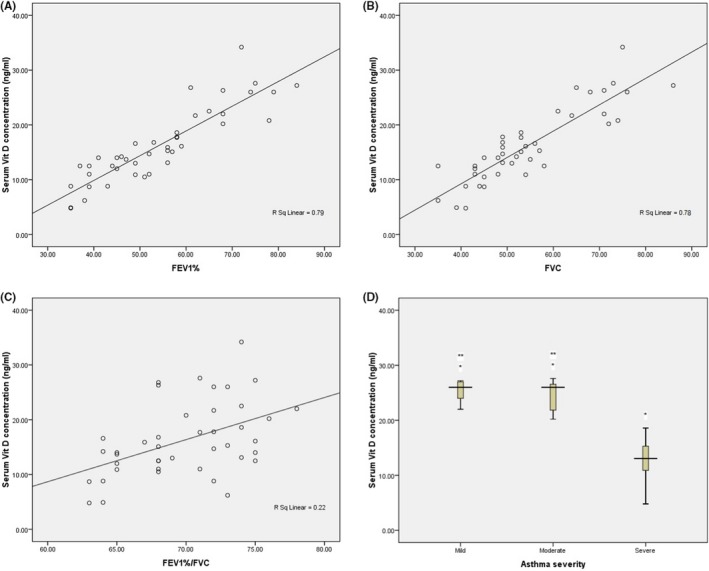Figure 2.

Correlation of serum Vit D with clinical findings of studied subjects. 2A, Positive correlation between serum vitamin D levels and percent predicted forced expiratory volume in 1 s (FEV1%) (r 2 = .79, P < .0001). 2B, Effect of serum levels of vitamin D on the forced vital capacity (FVC) was also significant (r 2 = .78, P < .0001). 2C, Correlation coefficient between serum vitamin D and FEV1%/FVC among patients with asthma (r 2 = 0.22, P = .001). 2D, Concentration of serum vitamin D was statistically significant between patients with mild (25.24 ± 2.21 ng/mL) symptoms compared to severe (12.72 ± 3.66 ng/mL) symptoms (*P < .0001). Patients with moderate (24.92 ± 4.06 ng/mL) symptoms also showed a significant difference for serum vitamin D concentration when compared to patients with severe symptoms (P < .0001). No significant difference was observed between mild and moderate groups for serum vitamin D concentration (**P = .8)
